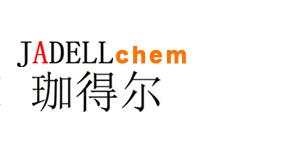Recombinant Human Exodus-2/CCL21 是一种稳态淋巴样趋化因子,有助于T细胞和树突状细胞进入淋巴样T区。
Synonyms
rHuExodus-2/CCL21; C-C motif chemokine 21; SLC; SCYA21 ; 重组人嗜酸性细胞趋化因子 (CCL21)
Species
HumanSource
E. coli Accession
O00585 Gene ID
6366 Molecular Weight
Approximately 12.2 kDa AA Sequence
SDGGAQDCCL KYSQRKIPAK VVRSYRKQEP SLGCSIPAIL FLPRKRSQAE LCADPKELWV QQLMQHLDKT PSPQKPAQGC RKDRGASKTG KKGKGSKGCK RTERSQTPKG P Biological Activity
Full biological activity determined by a chemotaxis bioassay using human lymphocytes is in a concentration range of 10-100 ng/ml. Appearance
Lyophilized powder. Formulation
Lyophilized after extensive dialysis against 20 mM PB, pH 7.4, 150 mM NaCl. Endotoxin Level
<1 EU/μg, determined by LAL method. Reconstitution
Reconstitute the lyophilized recombinant Human Exodus-2/CCL21 (rHuExodus-2/CCL21) to 0.1-1.0 mg/mL using sterile distilled water or aqueous buffer containing 0.1% BSA. Storage & Stability
Lyophilized recombinant Human Exodus-2/CCL21 (rHuExodus-2/CCL21) is stored at -20°C. After reconstitution, it is stable at 4°C for 1 week or -20°C for longer. It is recommended to freeze aliquots at -20°C or -80°C for extended storage. Shipping
Room temperature in continental US; may vary elsewhere. Background
CCL21 is a homeostatic chemokine constitutively produced in secondary lymphoid organs (SLOs) where it is involved in CCR7 naı¨ve and central memory T-cell homing via high endothelial venules (HEVs). CCL21CCL21 is also a homeostatic lymphoid chemokine instrumental in the recruitment and organization of T cell and dendritic cells into lymphoid T areas. In human secondary lymphoid organs (SLOs), CCL21 is produced by cells distributed throughout the T zone, whereas high endothelial venules (HEVs) lack CCL21 mRNA[1]. |



